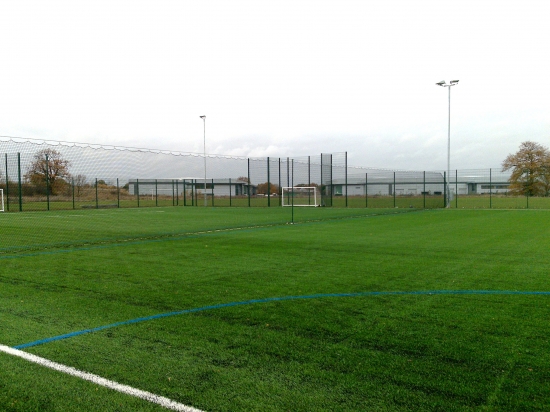Impact of Synthetic Sports Pitches
Front running football: the impact of synthetic sports pitch technology on the beautiful game
From jumpers for goalposts to a multi-billion pound global industry – football is without a doubt the world’s most popular and enduring sport. The shape, scope and professionalism of the game has come a long way from its ancient roots. It was the founding of the first football clubs and the Football Association in the 19th century that began to formalise rules and skills as we now understand them – and the role of the synthetic sports pitch has played a crucial part in the development of worldwide football as we know it today.
Nowadays advances in artificial turf pitches, all weather pitches and 3rd generation football pitches are taken as the norm – but that wasn’t always the case. The history of artificial soccer turf is in fact a chequered one. That history can only accentuate our appreciation of the incredible hi-tech advances enjoyed by amateur and professional players in recent years.
Elevating artificial turf pitches from inadequate to indispensable
Synthetic sports surfaces only made their way into the world of football as late as the 1980’s, when the first “plastic pitches” (as they were then known) were installed in several professional clubs. Queens Park Rangers pioneered the first UK installation of an artificial grass pitch in 1981. The motivation was to provide improved durability with minimal maintenance. But the reality was a million miles away from the incredible all weather pitch and 3rd generation pitch technology the game enjoys now.
These early artificial turf pitches soon became renowned and mocked for their inadequate playing surface with ridiculous levels of bounce, and for their unforgiving texture which was synonymous with carpet burns as well as more serious injuries – leading to a ban on early versions of the artificial grass pitch in 1988. Since then, a new generation of artificial pitches has been developed using sand and rubber fill technology that renders the synthetic sports turf almost indistinguishable from the real thing. Even better, increased weather resistance results in perfect all weather pitches for safe year round play, whilst shock absorption and resistance to football boot studs render the pitches safe as well as hard wearing. Today’s artificial grass pitches are hence becoming ever more popular across the footballing world, with FIFA encouraging quality control through the introduction of preferred suppliers.
The science behind 21st century artificial turf pitches.
3rd generation pitches offer superb grass imitating conditions through their innovative use of sand or rubber granules. By infilling the base of the silicone coated artificial grass fibres with sand and inlaying rubber granules between the blades a natural level of bounce and shock absorption is achieved. Different pile heights and densities can be applied to achieve the desired level of resistance and slide for all levels of players.
The artificial grass pitch can be fitted with a dynamic base which lays the carpet directly onto a stone base – a beneficial option for sport constructions that need to take careful maintenance budgets into account. A more sophisticated option is the engineered base, which applies tarmac onto a stone base with a shock pad incorporated. For professional and semi professional facilities, the engineered base can be the more attractive option for an artificial turf pitch that will provide optimum flexible playing conditions.
Advances in 3rd generation football pitches
For modern weather proof play a new brand of 3rd generation football pitches (commonly known as 3G pitches) has revolutionised the ability of football clubs to maximise the use and performance of their synthetic sports pitch. The technology makes light of bad weather with a range of all weather pitches available that never suffer from mud, flooding or slip. Players of all abilities can enjoy their sport throughout the year, whilst clubs can do away with inconvenient and costly canceled fixtures. Combine this with superb playing conditions and the artificial grass pitch today is a million miles away from its early cousins.
3G pitches bring economic benefits too. Durable, resistant to football spikes and cost effective to maintain, they are carefully crafted for longevity whilst their aesthetic qualities maximise the excitement of the game. The technology is such that visually they simulate the look and feel of natural grass perfectly, resulting in a brilliant playing surface that players will enjoy year after year.
Even within sand filled technology there is an array of artificial turf pitches available to suit any sport construction. Consult our guide to choosing the right synthetic sports surface to help you make the right choice for your facility.

 01621 85 86 86
01621 85 86 86 

 Sports - Football
Sports - Football
Share this page!